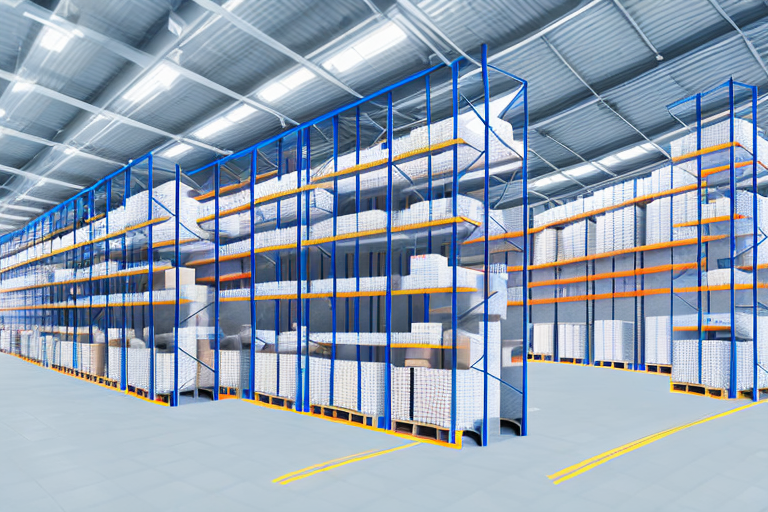Maximizing Logistics and Inventory Control for Optimal Efficiency
Logistics and inventory control are two essential aspects of any business that deals with goods. Efficient management of logistics and inventory can help businesses cut costs, deliver goods on time, and improve customer satisfaction. In this article, we will discuss various strategies and techniques that businesses can use to optimize their logistics and inventory control for optimal efficiency.
The Importance of Effective Inventory and Logistics Management
Inventory control involves managing the movement of goods in and out of a warehouse or storage facility, tracking inventory levels, identifying slow-moving or obsolete products, and forecasting demand. Logistics management encompasses the overall planning, implementation, and control of the movement, storage, and distribution of goods from the point of origin to the point of consumption.
Efficient inventory control and logistics management help businesses avoid stock-outs, reduce excess inventory, and minimize order turnaround time. By identifying and implementing best practices in their inventory control and logistics management operations, businesses can achieve significant efficiency gains.
Moreover, effective inventory control and logistics management lead to cost savings. By optimizing inventory levels and streamlining logistics processes, businesses can reduce storage and transportation costs, ultimately increasing profitability and competitiveness in the market. Therefore, prioritizing inventory control and logistics management is crucial for businesses as part of their overall operations strategy.
Strategies for Optimizing Inventory and Logistics Operations
Implementing Lean Principles
Lean principles aim to minimize waste and optimize value creation by ensuring that every step in the process adds value to the final product or service. Businesses can implement lean principles to optimize their logistics and inventory control operations. For example, adopting a just-in-time (JIT) inventory system can reduce inventory holding costs and minimize stock-outs by ordering and receiving inventory just in time for production or sale.
Assessing Current Inventory Management Systems
Before implementing new strategies, it's critical to evaluate the existing inventory management system to identify loopholes and areas for improvement. This involves analyzing data and reports on inventory levels, order history, and customer demand. Accurate assessment allows businesses to pinpoint bottlenecks and inefficiencies, paving the way for effective optimization. For more information on inventory management systems, refer to Inventory Management on Investopedia.
Adopting Just-in-Time Inventory Management
Just-in-time inventory management reduces the amount of inventory held, decreases storage costs, and responds swiftly to changes in demand. By ordering inventory only when it's needed, businesses can maintain leaner operations, prevent overstocking or understocking, and improve cash flow. This system relies heavily on accurate demand forecasting and reliable supplier relationships.
Balancing Cost and Service Levels
A logistics strategy must find the right balance between cost and service levels. Focusing solely on cost can lead to poor service, while prioritizing service may result in high expenses. Businesses should analyze their service requirements and financial constraints to develop a strategy that optimizes both aspects, ensuring efficient operations and customer satisfaction.
Leveraging Technology in Logistics and Inventory Control
The use of advanced technology is pivotal in streamlining logistics and inventory control processes. Inventory management software can track inventory levels, monitor sales, and forecast demand, allowing for informed decision-making. Automation tools such as barcode scanners, RFID systems, and robotic process automation reduce human errors and enhance operational efficiency.
Technology also plays a crucial role in supply chain optimization. Transportation management systems enable businesses to track shipments, manage carriers, and optimize routes, thereby reducing transportation costs and improving delivery times. Real-time tracking and monitoring of shipments allow for immediate identification and resolution of issues during transportation.
Enhancing Operational Efficiency
Optimizing Warehouse Layout
A well-designed warehouse layout significantly impacts the efficiency of logistics and inventory control operations. Grouping similar products together, placing frequently accessed items in accessible locations, and ensuring ample space for movement and storage can reduce retrieval times and increase overall productivity.
Incorporating technology such as automated storage and retrieval systems, conveyor belts, and advanced sorting mechanisms further enhances warehouse efficiency. Additionally, using data analytics to track inventory and order history assists in making informed decisions about storage allocation and space utilization.
Reducing Lead Times
Shortening lead times leads to faster delivery and improved customer satisfaction. Businesses can achieve this by collaborating with reliable suppliers, streamlining the order fulfillment process, and adopting automation tools for quicker operations. Reducing lead times not only enhances customer experience but also allows businesses to respond swiftly to market changes.
Training Employees on Best Practices
Employee training is essential for implementing efficient inventory management and logistics practices. Well-trained employees can identify inefficiencies, utilize technology effectively, and adhere to standardized procedures, thereby ensuring smooth operations and continual improvement in logistics and inventory control.
Supplier and Forecasting Management
Evaluating Supplier Performance
The performance of suppliers greatly affects the efficiency of logistics and inventory control operations. Businesses should evaluate suppliers based on lead times, delivery reliability, and the quality of goods provided. Partnering with reliable and efficient suppliers minimizes the risk of stock-outs and reduces inventory holding costs.
Creating a Robust Forecasting System
A robust forecasting system enables businesses to accurately predict future demand, facilitating the ordering of appropriate inventory levels. Utilizing historical sales data, analyzing industry trends, and considering external factors such as economic shifts and seasonal variations improve the accuracy of demand forecasts. Regularly updating the forecasting models ensures they remain effective in a dynamic business environment.
Performance Measurement and Improvement
Measuring Key Performance Indicators (KPIs)
Tracking key performance indicators (KPIs) like inventory turnover rate, order turnaround time, and stock-out rate is crucial for assessing the efficiency of logistics and inventory control operations. Regularly measuring KPIs helps identify areas that require improvement and facilitates informed decision-making for operational enhancements.
Outsourcing vs. Insourcing Logistics Operations
Businesses must decide whether to outsource or insource their logistics operations. Outsourcing can lead to cost savings and allow companies to focus on core competencies, while insourcing offers greater control over logistics processes. Evaluating the pros and cons of each approach helps businesses determine the best strategy for optimizing their logistics and inventory control operations.
Staying Ahead of Industry Trends and Innovations
To remain competitive, businesses must stay abreast of industry trends and innovations in logistics and inventory control. Keeping up with advancements such as artificial intelligence, machine learning, and the Internet of Things (IoT) can provide new opportunities for optimizing operations. Embracing these technologies and adapting to evolving best practices ensures that businesses maintain efficiency and continue to meet customer expectations in a rapidly changing marketplace.
Conclusion
Efficient logistics and inventory control are essential for the success of any business that deals with goods. By implementing best practices, analyzing current systems, leveraging technology, evaluating suppliers, balancing cost and service levels, reducing lead times, training employees, measuring KPIs, and staying ahead of industry trends, businesses can maximize their logistics and inventory control for optimal efficiency and success.




















